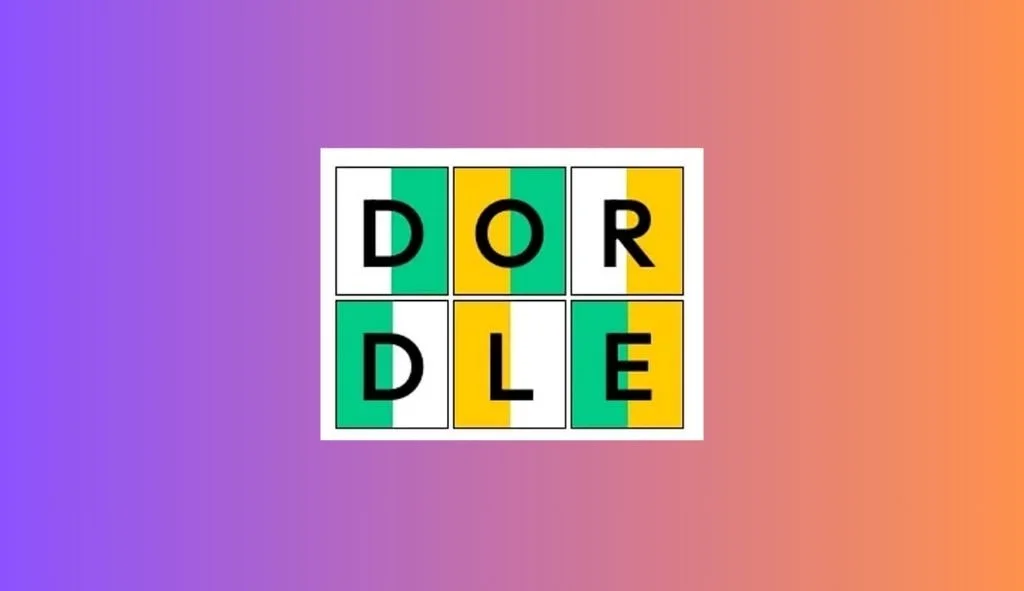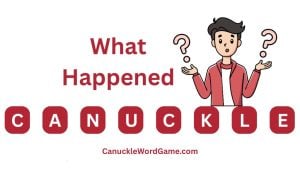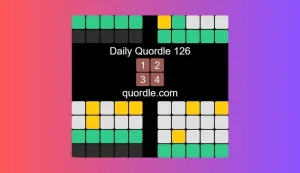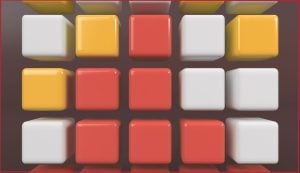How to Play Dordle: Master the Double Word Game
Dordle is a word puzzle game where players guess two five-letter words simultaneously using the same seven guesses, with color-coded feedback helping solve both puzzles at once.
Dordle represents the natural evolution of word puzzle games, taking the beloved Wordle concept and doubling the challenge. This innovative twist requires players to think strategically about two separate word grids while making efficient use of limited guesses. The game has gained significant popularity among word puzzle enthusiasts who want more complexity than traditional single-word games offer.
The appeal of Dordle lies in its ability to test multiple cognitive skills simultaneously. Players must maintain focus on two different puzzles, analyze feedback from both grids, and make strategic decisions that benefit both words. This dual-challenge format creates a more engaging and mentally stimulating experience than standard word games.
Understanding Dordle’s mechanics and developing effective strategies can significantly improve your success rate. The game rewards players who can think systematically, recognize patterns, and adapt their approach based on the feedback received. With practice and the right techniques, most players can consistently solve both puzzles within the seven-guess limit.
What is Dordle?
Dordle functions as a double version of Wordle, presenting players with two five-letter word puzzles that must be solved simultaneously. The game maintains the same basic principles as Wordle but increases the difficulty by requiring players to manage two separate grids with a single set of guesses. Each guess applies to both words, creating a unique strategic challenge that demands careful planning and execution.
The game was created to address the growing demand for more challenging word puzzles. While Wordle provides excellent entertainment with its single-word format, many players wanted additional complexity. Dordle fills this gap by maintaining familiar gameplay mechanics while introducing the strategic element of dual-grid management.
Players receive seven total guesses to solve both words, providing only one additional attempt compared to standard Wordle. This limited increase in guesses relative to the doubled challenge makes efficient guess selection crucial for success. The game rewards players who can maximize information gain from each guess across both grids.
The Double Word Challenge
The core challenge of Dordle stems from the need to gather useful information for two different words with each guess. Unlike Wordle, where each guess focuses on a single target, Dordle players must consider how their word choices will impact both puzzles. This creates complex decision-making scenarios where the optimal guess for one grid might not benefit the other.
Managing attention between two grids requires developed multitasking skills. Players must track letter positions, eliminated letters, and potential word patterns for both puzzles simultaneously. This cognitive load makes Dordle significantly more challenging than single-word games, even for experienced puzzle solvers.
The interdependence between the two grids creates interesting strategic situations. Sometimes a guess that seems suboptimal for one word provides crucial information for the other. Players must learn to balance immediate progress on one grid against the potential for gaining valuable insights across both puzzles.
Dordle vs Wordle Differences
The most obvious difference between Dordle and Wordle is the presence of two word grids instead of one. This fundamental change affects every aspect of gameplay, from initial word selection to final solving strategies. Players must develop new approaches that account for the dual-grid format while building on their existing Wordle skills.
Dordle provides seven guesses compared to Wordle’s six, but this single additional guess must cover twice the puzzle complexity. The guess-to-difficulty ratio makes Dordle proportionally more challenging than its predecessor. Players need higher efficiency in their guess selection to succeed consistently.
The keyboard feedback system in Dordle displays color coding for both words simultaneously. Each key shows information relevant to both grids, helping players track their progress across both puzzles. This visual aid becomes essential for managing the increased complexity of dual-word solving.
The time investment for Dordle typically exceeds that of Wordle due to the additional strategic thinking required. Players spend more time analyzing feedback, considering word possibilities, and planning their next moves. This extended engagement appeals to players seeking deeper puzzle experiences.
How to Play Dordle?
Playing Dordle requires understanding both the basic mechanics and the strategic implications of dual-grid gameplay. The game begins with two empty five-letter grids displayed side by side. Players type their first guess, which appears in both grids simultaneously. The color feedback system then provides information about letter accuracy for both words.
The input system works identically to Wordle, accepting any valid five-letter word. Players type their guess and press enter to submit it. The game automatically fills both grids with the same word, eliminating the need for separate entries. This streamlined input system keeps the focus on strategic thinking rather than mechanical complexity.
After each guess, players receive color-coded feedback for both grids. Green letters indicate correct letters in correct positions, yellow letters show correct letters in wrong positions, and gray letters represent letters not present in either word. This feedback system provides the foundation for strategic decision-making in subsequent guesses.
Game Setup and Interface
The Dordle interface presents two word grids arranged horizontally, creating a clear visual distinction between the two puzzles. Each grid contains five rows of five letter spaces, mirroring the familiar Wordle layout. The clean design ensures players can easily focus on both grids without visual confusion or distraction.
Below the grids, a virtual keyboard displays the current status of each letter. The keyboard uses a split-color system where the left half of each key represents the left word and the right half represents the right word. This visual system helps players quickly assess which letters remain viable for each puzzle.
The game interface includes mode selection options, allowing players to choose between daily and free play modes. Daily mode presents the same words to all players for a specific date, while free play generates random word pairs for unlimited practice. Both modes follow identical rules and mechanics.
Navigation elements appear at the top of the interface, providing access to settings, statistics, and help information. The settings menu allows customization of color schemes and other preferences to enhance the playing experience. Statistics tracking helps players monitor their improvement over time.
Basic Rules and Mechanics
Dordle follows a straightforward rule set that builds on familiar word game conventions. Players have exactly seven guesses to solve both five-letter words. Each guess must be a valid English word, and the game rejects invalid entries. The challenge lies in making strategic use of these limited attempts to gather sufficient information for both puzzles.
When players solve one word before the other, the game continues until both words are complete or the guess limit is reached. Solved words remain visible on the grid, and subsequent guesses no longer apply to completed puzzles. This mechanic allows players to focus entirely on the remaining unsolved word during the final guesses.
The game ends successfully when both words are solved within the seven-guess limit. Players receive feedback on their performance, including the number of guesses used and comparison to average solving statistics. Failed attempts occur when players cannot solve both words within the allotted guesses.
Letter frequency and position patterns follow standard English language conventions. The game uses a curated word list that excludes extremely obscure terms while maintaining sufficient variety for challenging gameplay. This balanced approach ensures fair difficulty without requiring specialized vocabulary knowledge.
Color Coding System
The color coding system in Dordle uses the same principles as Wordle but applies them to two words simultaneously. Green indicates perfect letter placement, yellow shows correct letters in wrong positions, and gray represents absent letters. Understanding these color meanings is essential for effective puzzle solving.
The keyboard color display uses a split system where each key shows information for both words. The left portion of each key corresponds to the left word grid, while the right portion relates to the right grid. This system allows players to quickly assess letter viability for each puzzle without constantly referencing the grids.
Color interpretation becomes more complex in Dordle because the same letter might have different statuses in each word. A letter could be green in one word and yellow in another, or present in one word but absent from the second. Players must track these differences carefully to avoid confusion during the solving process.
The visual feedback system updates immediately after each guess, providing instant information about letter accuracy. This real-time feedback enables dynamic strategy adjustment and helps players recognize patterns quickly. Effective use of color information often determines the difference between successful and failed solving attempts.

Dordle Game Modes
Dordle offers two distinct game modes that cater to different playing preferences and styles. The daily mode provides a shared experience where all players work on identical word pairs, creating opportunities for competition and comparison. Free play mode offers unlimited practice with randomly generated word pairs, allowing players to develop their skills without time constraints.
Both modes follow the same basic rules and mechanics, ensuring that skills developed in one mode transfer directly to the other. The choice between modes often depends on whether players prefer competitive elements or casual practice sessions. Many players use both modes regularly, playing daily mode for the shared experience and free play for additional practice.
The mode selection affects the social aspects of Dordle gameplay. Daily mode enables score sharing and comparison with friends, while free play focuses purely on individual skill development. This flexibility allows the game to serve both competitive and casual player preferences effectively.
Daily Dordle Mode
Daily Dordle mode presents the same word pair to all players on a specific date, creating a shared puzzle experience. This format mirrors the original Wordle concept while adding the dual-word challenge. Players can compare their results with friends and online communities, fostering competition and discussion about solving strategies.
The daily mode resets at midnight in the player’s time zone, providing a fresh challenge each day. This schedule creates anticipation and routine for regular players who incorporate Dordle into their daily activities. The limited availability of new puzzles adds value to each attempt and encourages thoughtful play.
Results sharing features allow players to post their performance without revealing the actual words. The sharing format shows the number of guesses used and the general difficulty of the puzzle. This system maintains the challenge for other players while enabling performance comparison and discussion.
Daily mode statistics track long-term performance trends, including average guesses used, success rate, and current solving streaks. These metrics provide motivation for consistent play and improvement. Many players find the statistical tracking adds an extra layer of engagement to the daily puzzle routine.
Free Dordle Mode
Free play mode generates unlimited random word pairs, allowing players to practice without waiting for daily resets. This mode serves players who want extended practice sessions or immediate puzzle access outside of daily mode availability. The random generation ensures variety and prevents memorization of specific puzzle solutions.
Free play mode proves particularly valuable for skill development and strategy testing. Players can experiment with different starting words, approach variations, and solving techniques without the pressure of maintaining daily streaks. This low-pressure environment encourages learning and improvement.
The unlimited nature of free play mode makes it ideal for competitive practice sessions or group play situations. Teachers and puzzle groups often use free play mode to generate content for competitions or educational activities. The mode’s flexibility supports various usage scenarios beyond individual entertainment.
Random word generation in free play mode maintains the same difficulty standards as daily mode. The algorithm selects words from the same curated list, ensuring consistent challenge levels. This parity means that skills developed in free play translate directly to daily mode performance.
Winning Strategies for Dordle
Successful Dordle play requires strategic thinking that extends beyond basic word guessing. Players must develop approaches that maximize information gain for both words while efficiently using their limited guesses. The most effective strategies focus on early information gathering, systematic elimination, and adaptive planning based on emerging patterns.
The dual-grid format demands different thinking patterns than single-word games. Players must constantly evaluate how each potential guess will impact both puzzles and prioritize moves that provide balanced information. This strategic complexity makes Dordle more rewarding for players who enjoy analytical challenges.
Effective Dordle strategies often involve planned guess sequences rather than reactive play. Players benefit from thinking several moves ahead and considering how current guesses set up future opportunities. This forward-thinking approach distinguishes successful players from those who struggle with consistency.
Starting Word Selection
The opening word choice significantly influences Dordle success rates due to its impact on both grids simultaneously. Effective starting words contain common letters that appear frequently in English words, maximizing the likelihood of gaining useful information for both puzzles. Words with multiple vowels often provide strong foundation information.
Popular starting words include “TRACE,” “STONE,” “CRANE,” and “ADIEU” because they contain high-frequency letters and multiple vowels. These words help establish basic letter presence quickly, providing a solid foundation for subsequent guesses. Players should avoid starting words with repeated letters or uncommon consonants.
The ideal starting word balances vowel coverage with consonant frequency. Words containing A, E, I, O, or U alongside common consonants like R, S, T, L, and N typically yield productive first-guess results. This balance ensures that players gather relevant information regardless of the specific words chosen for the puzzle.
Some players prefer starting word sequences that systematically cover the most common letters across multiple guesses. This approach trades immediate word-solving potential for comprehensive letter coverage. While this strategy may use more guesses initially, it often leads to more confident solving in later stages.
Managing Both Grids Simultaneously
Successful dual-grid management requires systematic attention allocation and information tracking. Players must resist the temptation to focus exclusively on one word while neglecting the other. Balanced attention ensures that information gathering benefits both puzzles and prevents wasted guesses on completed words.
The key to effective grid management lies in recognizing when to shift focus between words. Early in the game, players should prioritize guesses that provide information for both grids. As patterns emerge and one word becomes clearer, strategic focus adjustments help optimize the remaining guesses.
Visual scanning techniques help players maintain awareness of both grids during play. Regular back-and-forth assessment of each grid’s status prevents overlooking important clues or patterns. Many successful players develop systematic checking routines that ensure comprehensive information utilization.
Information synthesis across both grids often reveals solving opportunities that might not be apparent when considering each word independently. Letters that appear in both words can provide confirmation of spelling patterns, while contrasting letter feedback helps eliminate impossible combinations quickly.
Advanced Techniques
Advanced Dordle players employ sophisticated techniques that go beyond basic letter elimination and pattern recognition. These methods involve probability analysis, strategic guess sacrifice, and dynamic strategy adaptation based on emerging puzzle characteristics. Mastering these techniques significantly improves solving consistency and efficiency.
Probability-based play involves considering the likelihood of various letter combinations and word possibilities based on the current evidence. Players who understand common letter patterns and word structures can make more informed guesses that increase solving probability. This analytical approach reduces reliance on random guessing.
Strategic guess sacrifice involves using a guess primarily to eliminate multiple letter possibilities rather than attempting to solve either word directly. This technique proves valuable when players have narrowed down possibilities but need additional information to make confident final guesses. The short-term guess cost often pays dividends in improved solving accuracy.
Pattern recognition skills enable advanced players to identify word possibilities based on partial information. Understanding common prefixes, suffixes, and letter combinations helps players generate viable word candidates more efficiently. This skill development comes through extensive practice and vocabulary exposure.
Frequently Asked Questions
How many guesses do you get in Dordle?
Players receive seven total guesses to solve both five-letter words in Dordle. This represents only one additional guess compared to Wordle despite doubling the puzzle complexity.
Can you solve one word at a time in Dordle?
No, each guess applies to both words simultaneously until one word is completely solved. Once you solve one word, subsequent guesses only apply to the remaining unsolved word.
What happens if you only solve one word in Dordle?
If you solve only one word within seven guesses, the game counts as a failure. Success requires solving both words within the guess limit.
Is Dordle harder than Wordle?
Yes, Dordle is significantly more challenging than Wordle due to the need to manage two puzzles simultaneously with only one additional guess. The complexity increases exponentially rather than linearly.
What are the best starting words for Dordle?
Effective starting words include “TRACE,” “STONE,” “CRANE,” “ADIEU,” and “RAISE” because they contain common vowels and frequently used consonants that provide good information for both grids.
Can you play Dordle more than once per day?
Yes, Dordle offers both daily mode (one puzzle per day) and free play mode (unlimited random puzzles). Free play mode allows unlimited practice and skill development.
Do both words in Dordle share any letters?
The two words in Dordle are typically unrelated and may or may not share common letters. Each puzzle is independent, though strategic players can use shared letters to their advantage when they occur.
Is there a time limit for Dordle?
No, Dordle does not impose time limits. Players can take as long as needed to consider their guesses and analyze the feedback from both grids.
How do you read the keyboard colors in Dordle?
The keyboard in Dordle uses split colors where the left half of each key represents the left word and the right half represents the right word. This system helps track letter status for both puzzles simultaneously.
Can you use the same starting word for both Dordle and Wordle?
Yes, many effective Wordle starting words work well for Dordle. However, some players prefer words with broader letter coverage specifically for the dual-grid challenge that Dordle presents.






